How Utah Scientists Rang The Alarm About The Great Salt Lake
The shrinking Great Salt Lake puts Utah at risk of an ecological and public health emergency. Local scientists are stepping up, sharing actionable steps to help save it.

Kevin Perry in front of a lookout point at the Great Salt Lake. Credit: D Peterschmidt, Science Friday
Dr. Bonnie Baxter is one of the scientists at the forefront of the effort to save the Great Salt Lake from drying up, and she and her colleagues are incredibly busy at the moment.
In the middle of our interview about the lake’s environmental importance, Baxter, the director of the Great Salt Lake Institute at Westminster College in Utah, got a call from a Utah senator to her cell phone. It was a question related to a lake conservation bill running that day, and Baxter gestured that she was going to pick up. “It’s constant,” she said. “This is a full-time advocacy thing.”
It’s not just Baxter’s phone ringing off the hook. Dr. Kevin Perry, an atmospheric scientist at the University of Utah, says he’s been averaging about two media interviews on the Great Salt Lake per week. Sometimes, it’s three.
“A lot of my job now is email triage,” he says. “But even though some of my colleagues thought I was nuts… the message is finally resonating.”
These scientists, in addition to their roles as professors and researchers, have become full-time advocates for the Great Salt Lake, which faces an unprecedented danger of going dry.
Since 1985, the Great Salt Lake’s water level has declined to a record low. An emergency briefing published by Brigham Young University asserts that without “a dramatic increase in waterflow” to the lake in the next two years, it will dry up completely—with disastrous effects for the ecosystem, the local economy, and even the public health of the surrounding areas.
Dr. Benjamin Abbott, one of the authors of the briefing and a professor of ecosystem ecology at BYU, says that if something doesn’t change, the lake has about five years left.
“From 2020 to 2023, we lost 1.2 million acre-feet of water a year. To put that in context, there’s only about 6.5 million acre-feet left in the lake. If we continue at this level of depletion, the lake as we know it is gone,” says Abbott.
The scientists supporting the public briefings, interviews, and bills are pushing for immediate change, while there’s still a chance to preserve the lake. Though the future might look bleak, a recent flurry of policy updates have researchers and other supporters of the lake—including private citizens, local business owners, and policymakers that are sympathetic to the cause—more energized than ever.
In 2022, the saline lake system in Utah secured nearly $500 million dollars in funding to research and repair its watershed systems, and to understand the effects of the current damage. The Great Salt Lake has even recently received federal attention, with Joe Biden signing a $25 million bill in late 2022 for research on the Great Basin saline lake hydrology (which includes the Great Salt Lake), and supporting conservation efforts. Bills aiming to protect the lake and manage water use are being presented at the Utah legislature on a daily basis.
The lake’s uncertain future puts much more than a state park at risk. The importance of the Great Salt Lake to the region’s water supply, economy, health, and culture has compelled these researchers to bring their case to stakeholders themselves.
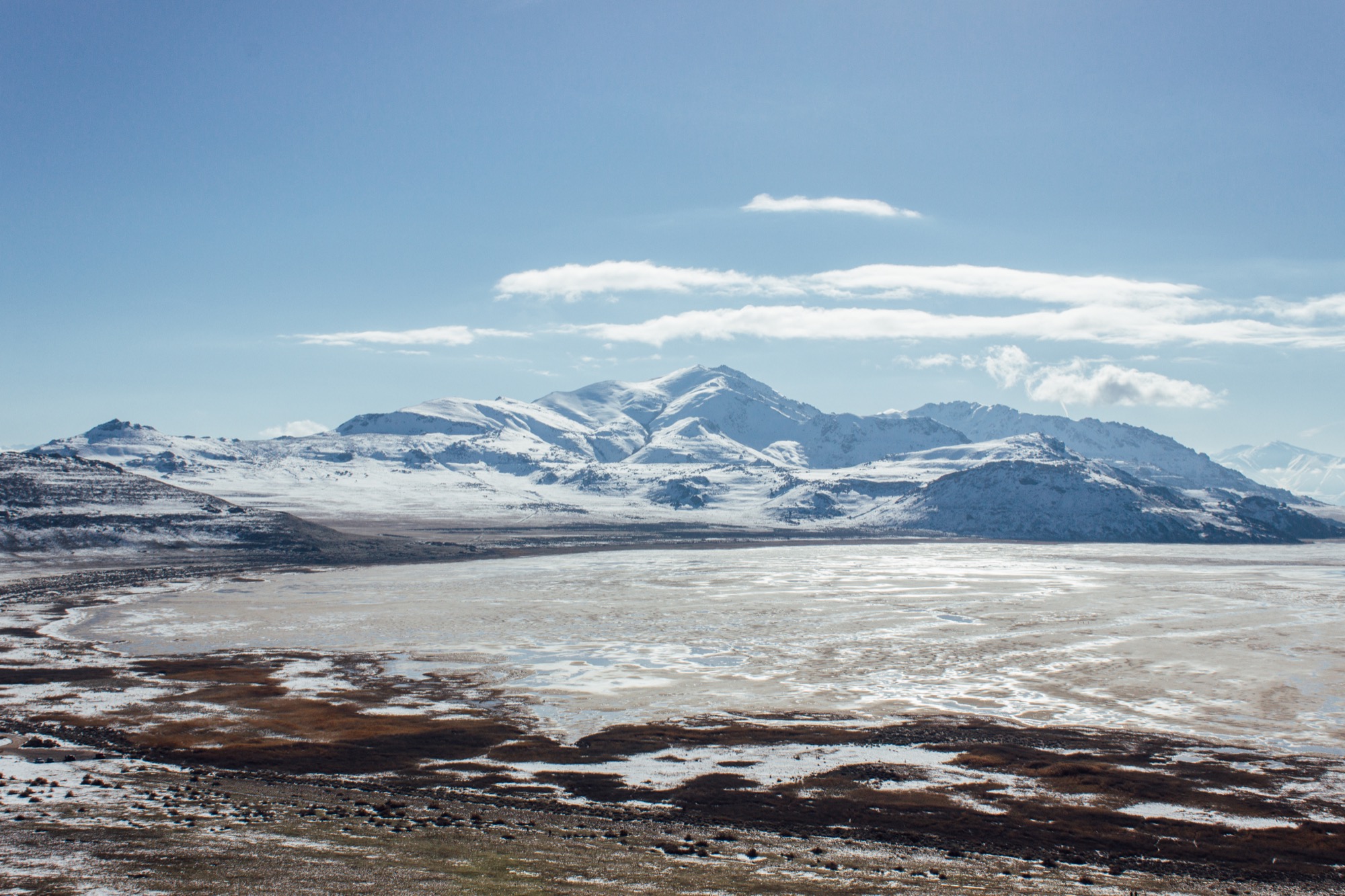
We visited Perry in Antelope Island State Park on a brisk winter morning.
“All of this used to be the lake,” said Perry, gesturing out to the vast expanse of land in front of him.
Prior to his seven years of researching dust emission and air pollution on the Great Salt Lake, he studied the health effects of other atmospheric emissions, such as how air pollution from China migrates and the debris and dust resulting from the 9/11 attacks.
The lake’s water level began trending downward dramatically a few decades ago, which made the old exposed lakebed look a bit like the surface of the Moon. Behind us was a beached marina, where docks creaked above dry, cracking dirt. The marina is one of the many abandoned attractions on Antelope Island, the park name itself also defunct, as the water level has lowered so much it is now a peninsula.
See an interactive map of the Great Salt Lake’s water levels since 1985. Credit: Utah Division of Wildlife Resources
The Great Salt Lake is a terminal lake, meaning there’s no outlet for water to pass out of the lake. If its water sources are cut off, terminal lakes are at risk of shrinkage. That dependence on source water also makes terminal lakes particularly susceptible to the effects of climate change, because climate factors like temperature and precipitation can adversely impact their water supply.
But Perry says the lake’s water problem isn’t solely the result of global climate change; it’s actually primarily due to inefficient local water usage.
“People are always asking me, ‘Is the lake shrinking because of climate change or the mega-drought?’ The answer is actually no,” says Perry.
The residents of Utah rely upon the flow of melted snowpack into three rivers—the Bayer, Weber, and Jordan—for their water consumption. Those rivers feed into the Great Salt Lake, historically keeping it full. But as the population of Utah continues to increase, more water has been diverted for agriculture, industry, and public use.
“What’s happened is we diverted more water than what was sustainable,” says Perry.
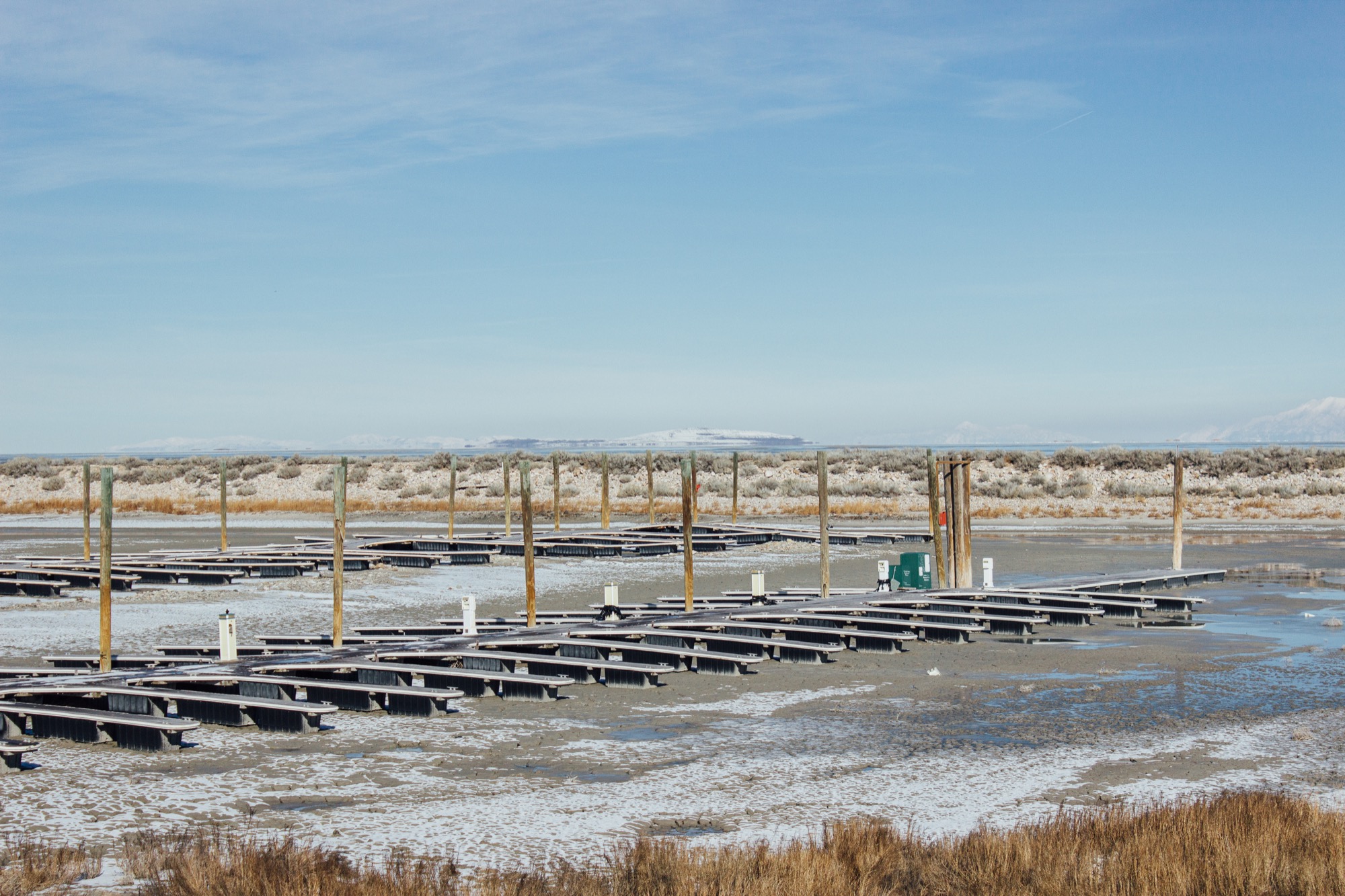
Utah State University estimates that around 87% of Utah’s water goes to agriculture. Agriculture is the main industry that needs to implement major water use changes to make a difference, but farmers are concerned that production will have to slow if water use decreases.
There is a substantial budget aimed at helping farmers conserve water, but a noticeable lack of legislation to enforce these reductions.
Nevertheless, to reduce water use, local stakeholders have taken concrete steps: A 2018 bill established an agriculture water optimization task force, and Utah’s Board of Water Resources and the Department of Agriculture have opened applications for grants that will fund commercial, residential, and industrial water use measurement meters as well as farm water use optimization infrastructure respectively. Agricultural experts have also joined scientists from Utah’s public research universities on the Utah Great Salt Lake Strike Team, which proposed policy options that promoted agricultural water use reduction in a February report.
But it may take years to implement these programs—time that the lake doesn’t have before it dries up.
Understanding some of the complex factors that contribute to the ecological and atmospheric impacts of the disappearing lake requires a little demonstration, and Perry comes prepared.
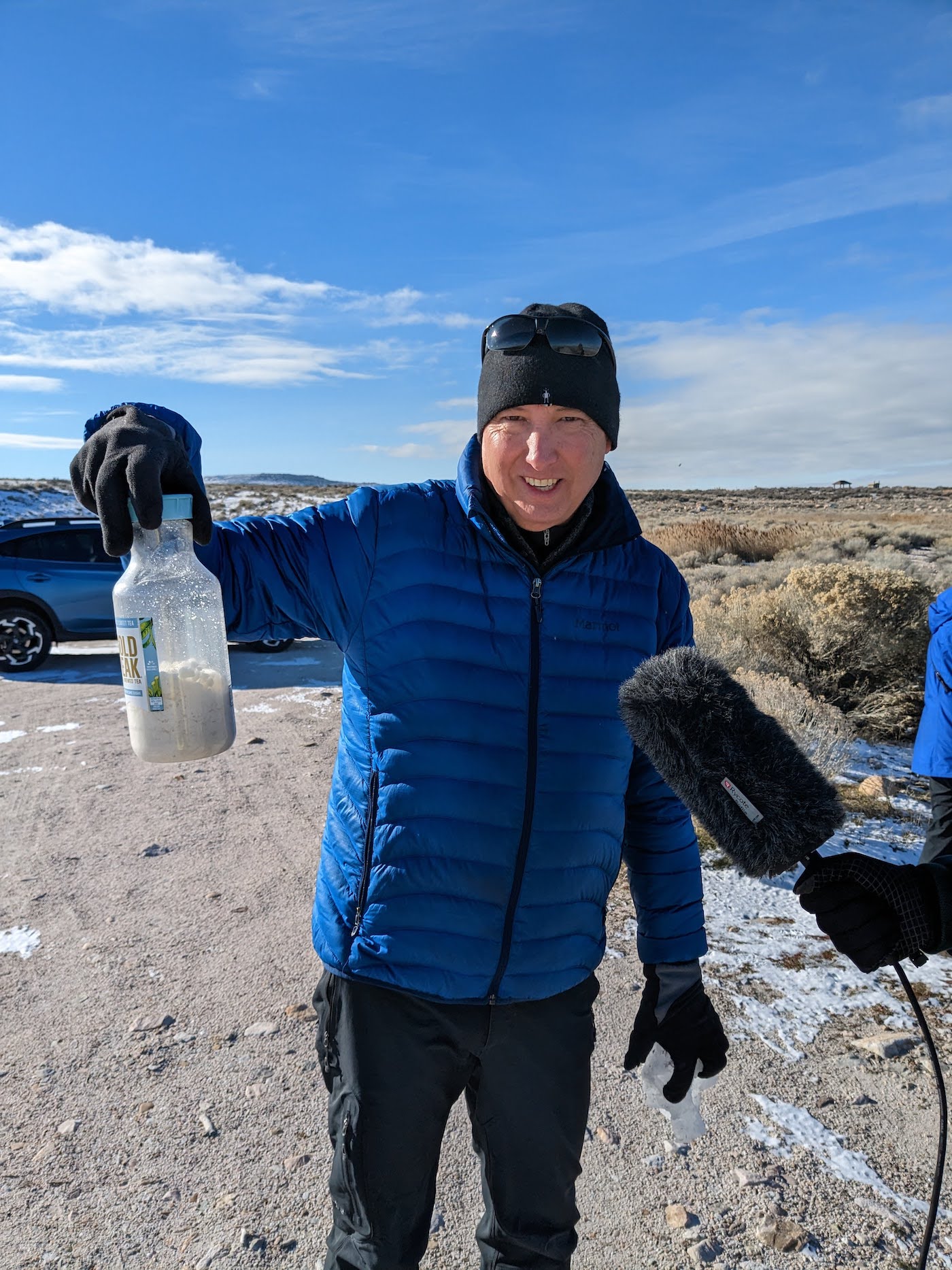
One factor is the lake’s salinity, which is increasing because of the lower water levels. The salinity in some parts of the lake has increased to a level that is uninhabitable for brine shrimp and brine flies, which could cause a local food web collapse, hurting the business of local brine shrimp fishermen.
One of the consequences of the lake shrinkage now causing alarm is the dust plumes rising from the exposed lakebed. The plumes not only cover people’s cars, as Perry puts it, but also contain potentially harmful hazards, like heavy metals and arsenic. While research is still underway to fully understand the human health effects of the pollutants coming off the lake, much of the critical damage to the lake is in plain sight.
Back in 2016, Perry started conducting his research for the University of Utah by riding a dirt bike to sample these dust particles, covering over 2,300 miles of the exposed lakebed over two years. Now, standing on the frozen lakebed, it’s eerily silent. “Water should be six feet over our heads right now,” Perry said.
He kicked the lakebed, trying to illustrate the dust that would come off the crust on a warmer day. “It’s still frozen,” he laughed, assuring us we weren’t about to generate a dust plume. “[But generally], we want to limit disturbances on the surface.”
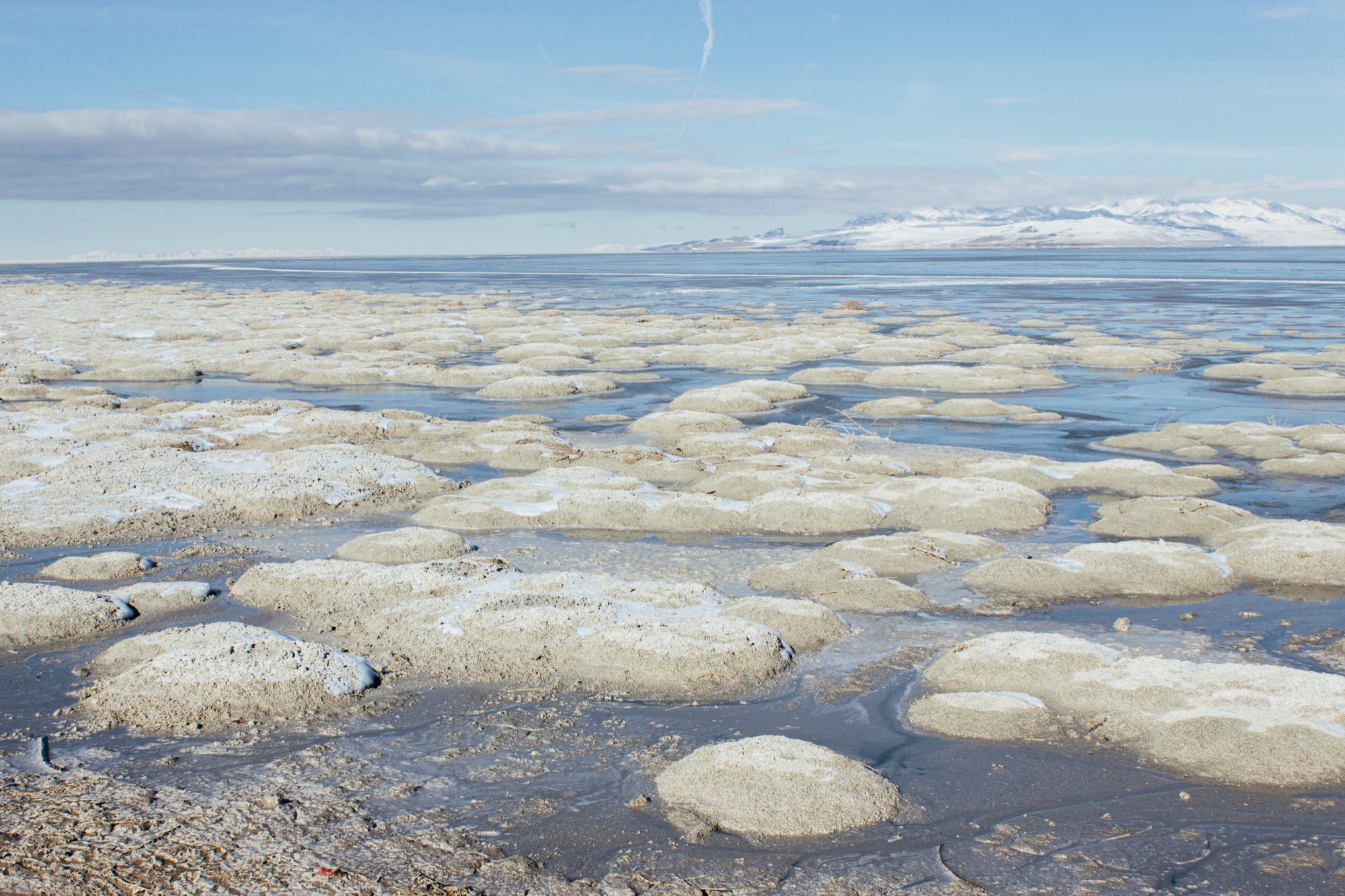
Along with frequent interactions with journalists, scientists in the Salt Lake City area are fervently describing the potential consequences of losing the lake to politicians.
Great Salt Lake researchers and conservationists worked to find sympathetic politicians in the Utah state house, which is majority Republican. The effort looks to be delivering some returns. Last year, a Great Salt Lake Watershed Enhancement bill, aimed at retaining and enhancing water flows to the Great Salt Lake, was passed unanimously. The collaboration between politicians and scientists in Utah has been a show of bipartisanship “that’s never been done before at this level,” says Baxter.
In May of 2022, Utah’s lieutenant governor Deidre Henderson went out for her first time ever on a boat tour of the Great Salt Lake, where she expressed her support for its preservation. After Utah Governor Spencer Cox was able to see the full extent of the lake’s shrinkage, he said in an interview, “on my watch, we are not allowing the lake to go dry.” Other state legislators were even taken on helicopter tours of the lake.
“Things really started to click when we took legislators to see the visual impact of the situation,” Abbott says.
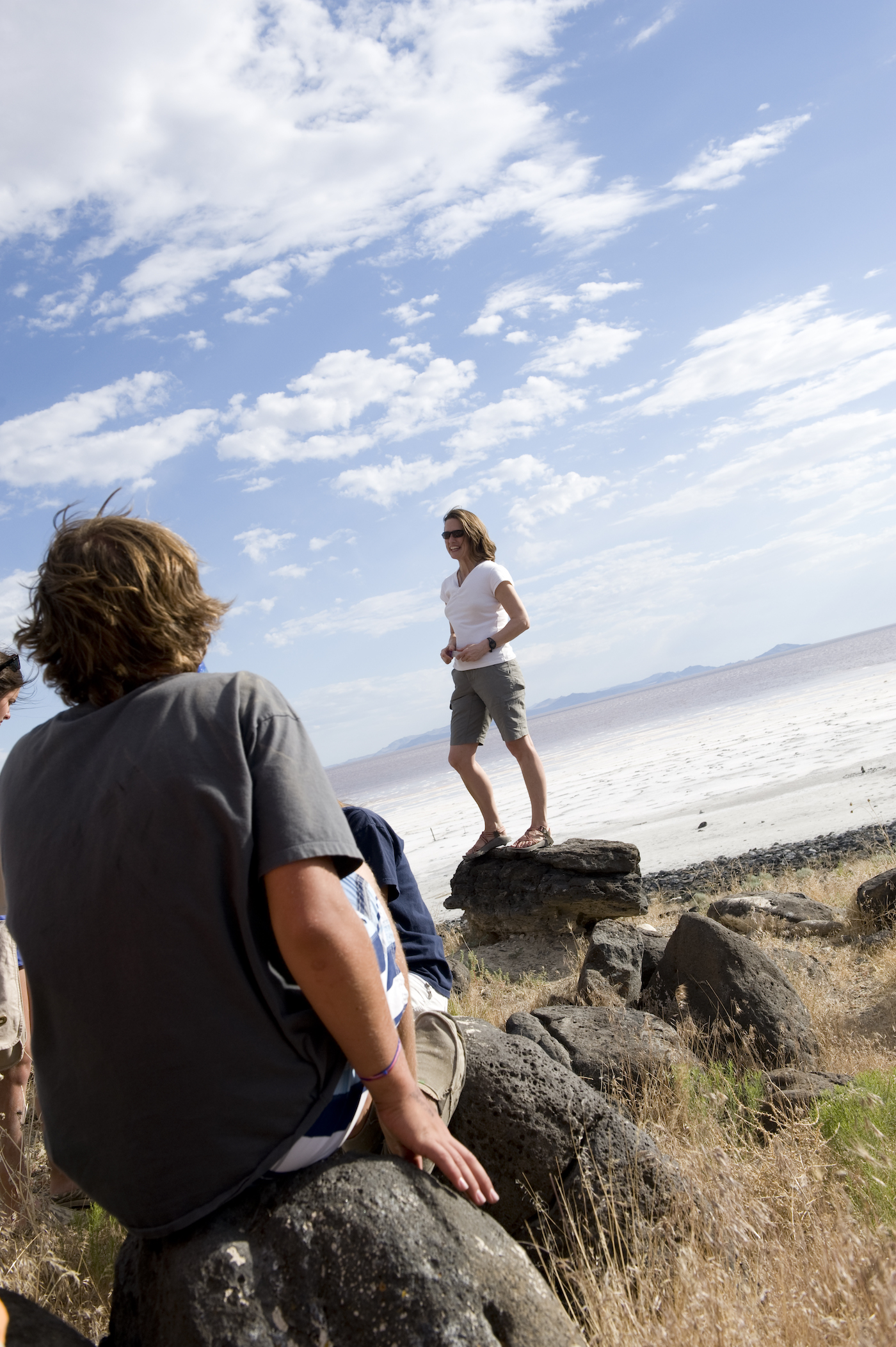
As the director of the Great Salt Lake Institute, Baxter focused on public educational programming during the pandemic. When in-person research slowed, she was able to spend time amplifying the results of that research, attracting the attention of some pretty important listeners. For example, Brad Wilson, a Republican and Utah Speaker of the House, was one of the most outspoken supporters of saving the Great Salt Lake last year.
“The story goes that I spoke on Radio West, a radio station here, about the Great Salt Lake, and [Wilson] was moved enough to focus legislation on the lake,” Baxter says with a shrug. “But I don’t want to pretend that this story is about hearing an interview online. The legislative body in Utah also cares about ski tourism, real estate, the brine shrimp companies, the mineral extraction companies—all things which are affected by the lake’s well being.”
To get science-backed solutions in front of the right people, researchers are learning something from politicians—how to leverage their own experience and relationships.
“Plenty of lawmakers don’t identify with professors,” says Abbott. “If I give a speech at the capitol about the importance of Great Salt Lake, that is going to go over differently than if Brad Wilson, with his conservative credentials and business experience, gives that talk.”
He also stresses the importance of not seeing lawmakers as opponents, but rather using their interests to persuade them to support conservation. Governor Cox is a farmer himself, for example, so Abbott says that Cox is a “much more effective ambassador” to explain the importance of water conservation directly to local farming communities.
“In a way, [the fact that water use is currently inefficient] is positive,” says Abbott, who is endlessly chipper about making progress. “If we were already using water really efficiently, it’d be hard to get the 30 to 50% reductions that we need.”
The bills that are seeing immediate traction address per capita water use, landscape watering, and water-meter infrastructure. Some policy suggestions from the Great Salt Lake Strike Team include mineral extraction optimization to avoid unnecessary water depletion during that process, and sponsoring cloud modification to produce extra precipitation. Although these interventions are helpful, Abbott says not every solution that passes will have the same impact.
“The most important thing is keeping people’s eye on the ball. The only way we solve this problem is through water conservation,” says Abbott.
Conversation with the legislature is active, and while not while not all proposed legislation is ultimately successful, lawmakers and other stakeholders have become acutely aware of the danger losing the lake poses. Abbott called 2022 “the year of water.”
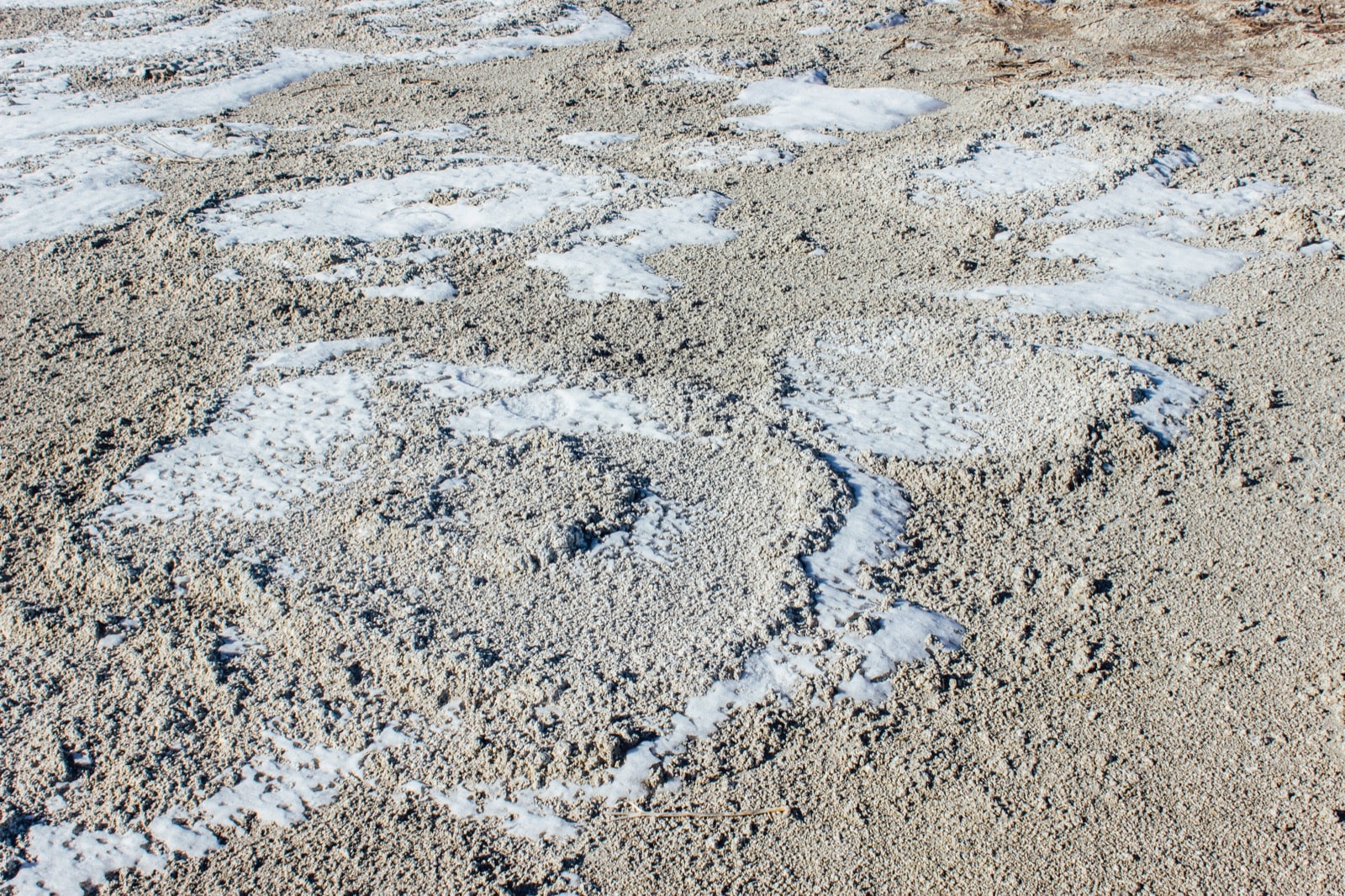
As researchers, these scientists have a passion for the unique ecosystem of the Great Salt Lake. But their role as conservation advocates is about more than their work as individuals. “It’s not just about the 10 million birds at risk,” says Baxter. It’s not just about the microbialites that feed the brine flies that feed the birds.”
Baxter says she’s now being invited to speak at places that wouldn’t normally show interest in a conservation project if it were just about microbiology, her specialty. “I’m talking in assisted living homes. I’m talking in churches, to real estate developers, in ski resorts. I’m giving so many more public lectures now than I used to,” she says.
“[Ski resort managers] want to know: What happens when that dust lands on the snow and melts it? What happens when the lake is gone and there’s no lake effect producing 20% of the snow on these mountains? Those are reasons to care.”
Baxter and her colleague Jaimi Butler even wrote a children’s book about the science of the Great Salt Lake. “We gave all the legislative representatives copies of it, many of them have kids.”
This massive system shrinking has a profound impact on the communities that feel connected to it. “You try to separate out some of those feelings to really be able to objectively assess the situation,” Abbott says of his own emotional connection to the lake. “But this is also where I live. My kids breathe the air here, and the Great Salt Lake is one of our favorite places to visit.”
Perry says that his research helped him appreciate the lake’s majesty. “I came out over 150 times, and every single time I saw something new and different that I hadn’t seen before. And that just floored me.”
Utah’s political landscape tends to be seen as unique in its willingness to foster collaboration between politicians and create trust between groups of constituents. Not everyone in Utah gets along. But many legislators in Utah say they feel connected to “the Utah Way” of “work[ing] together to solve problems,” as Salt Lake City county mayor Jenny Wilson puts it. And support hasn’t just come from scientists and politicians, it’s also come from crucial civilian groups, like local faith communities, Indigenous advocates, and other environmental advocates who’ve added their expertise and passion to the conversation.
Abbott feels an obligation to communicate with civilians, politicians, and other non-scientists on important issues that intersect with their research. “If you want to continue doing your science for science’s sake, that’s great. But we need more people who are working at the interface between research and policy,” he says.

Could the advocacy effort underway at the Great Salt Lake become a road map for other scientists advocating for a better future for their homes?
“We don’t have to extrapolate with a scientific model to understand what might happen with the Great Salt Lake. We have seen this movie hundreds of times before all around the world,” says Abbott. He cites the Aral Sea, which has been devastated by irrigation, and whose dust storm pollutants spread for thousands of miles. A more local example in California is Owens Lake, which dried up in the 1920s after just a few years of severe water mismanagement. California has spent nearly 2.5 billion dollars on the lake’s dust management. Another dry saline lake that was previously considered under control continues to cost Los Angeles money for dust pollution control. With these unpromising examples, Abbott says, “We’re blazing new ground here.” He adds, “There hasn’t been a good model of how to do this yet.”
Although the speed of the Great Salt Lake’s ecological deterioration is concerning, Abbott thinks there’s reason for cautious optimism, due to the recent funding successes and the issue’s local and national visibility.
“The flip side is if we fail, it’s such a tragedy,” he says. “Because we have the tools, we have the knowledge, and we have the resources to solve it. Everybody’s watching us right now, and it’s our chance to shine.”
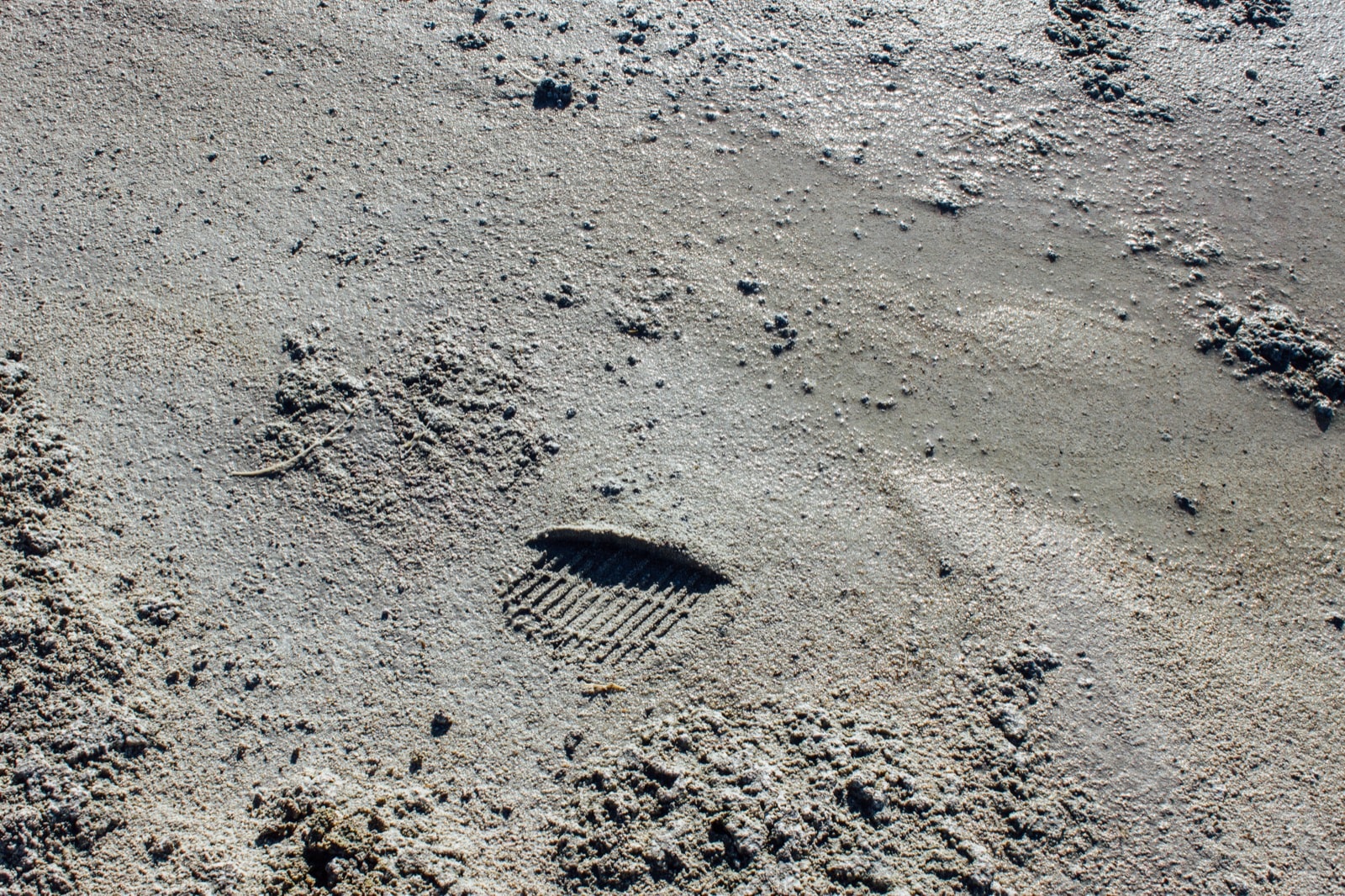
A footprint in the lakebed at the Great Salt Lake. Credit: Emma Gometz, Science Friday
Emma Lee Gometz is Science Friday’s Digital Producer of Engagement. She’s a writer and illustrator who loves drawing primates and tending to her coping mechanisms like G-d to the garden of Eden.